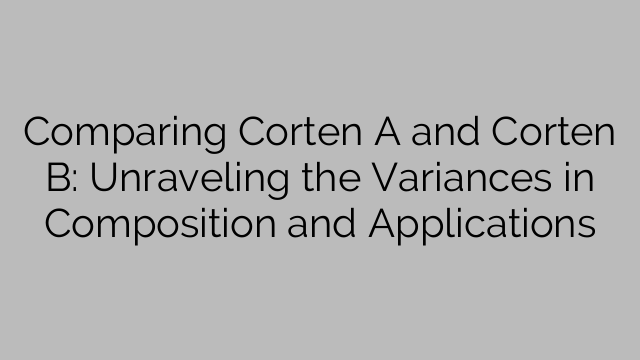Sastav:
The primary difference between Corten A and Corten B lies in their composition. Corten A is primarily made up of iron, with small amounts of copper, chromium, and nickel. On the other hand, Corten B contains iron along with higher amounts of copper, chromium, and nickel compared to Corten A. This difference in composition accounts for their varying properties and performance.
Prijave:
Corten A is widely used in architectural structures, such as buildings, bridges, and outdoor sculptures. Its rust-like appearance gives it a distinctive and aesthetically pleasing look, making it a popular choice for outdoor artistic installations. Corten A’s ability to withstand corrosion also makes it suitable for structural applications where exposure to the elements is high.
Corten B, with its higher copper content, is particularly suitable for industrial applications that require enhanced corrosion resistance. It is commonly used in manufacturing equipment, shipping containers, rail cars, and other heavy-duty applications that encounter harsh environments. The higher copper content in Corten B provides improved resistance to atmospheric corrosion, making it a reliable choice for industrial infrastructure.
Corrosion Resistance:
Both Corten A and Corten B are highly corrosion-resistant steels, owing to the protective layer of rust that forms on their surface. This layer, known as patina, acts as a barrier against further corrosion. The presence of copper in both types of weathering steel enhances their resistance to atmospheric corrosion and ensures long-term durability.
However, due to its higher copper content, Corten B offers better protection against corrosion in severe weather conditions. This makes it more suitable for applications in coastal and marine environments where saltwater exposure is a concern. Corten B’s enhanced resistance to corrosion gives it an advantage in situations where long-term performance is required.
zaključak:
In conclusion, while Corten A and Corten B share many similarities in terms of their resistance to corrosion and the formation of a protective patina, their composition and applications vary. Corten A is commonly used in architectural structures and outdoor artistic installations, while Corten B finds its place in heavy-duty industrial infrastructure. The higher copper content in Corten B provides enhanced resistance to atmospheric corrosion, making it more suitable for harsh environments.
Understanding the differences between Corten A and Corten B can help professionals and enthusiasts make informed decisions when choosing the right weathering steel for their projects. Both types offer unique qualities and aesthetic appeal, ensuring long-lasting performance and a visually appealing finish. Ultimately, the choice between Corten A and Corten B depends on the specific requirements and environmental conditions of each application.
[ad_2]

